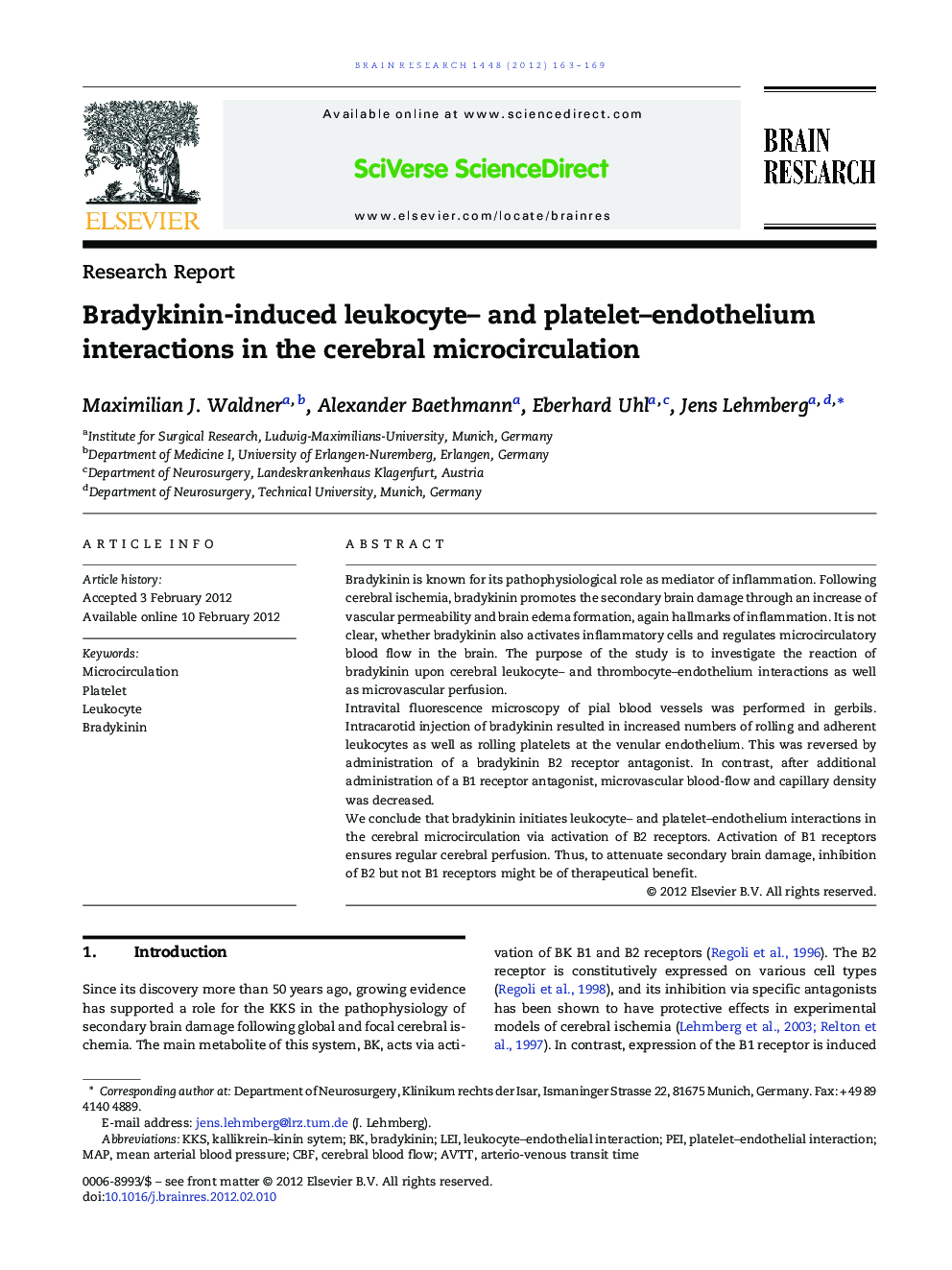| Article ID | Journal | Published Year | Pages | File Type |
|---|---|---|---|---|
| 6264482 | Brain Research | 2012 | 7 Pages |
Bradykinin is known for its pathophysiological role as mediator of inflammation. Following cerebral ischemia, bradykinin promotes the secondary brain damage through an increase of vascular permeability and brain edema formation, again hallmarks of inflammation. It is not clear, whether bradykinin also activates inflammatory cells and regulates microcirculatory blood flow in the brain. The purpose of the study is to investigate the reaction of bradykinin upon cerebral leukocyte- and thrombocyte-endothelium interactions as well as microvascular perfusion.Intravital fluorescence microscopy of pial blood vessels was performed in gerbils. Intracarotid injection of bradykinin resulted in increased numbers of rolling and adherent leukocytes as well as rolling platelets at the venular endothelium. This was reversed by administration of a bradykinin B2 receptor antagonist. In contrast, after additional administration of a B1 receptor antagonist, microvascular blood-flow and capillary density was decreased.We conclude that bradykinin initiates leukocyte- and platelet-endothelium interactions in the cerebral microcirculation via activation of B2 receptors. Activation of B1 receptors ensures regular cerebral perfusion. Thus, to attenuate secondary brain damage, inhibition of B2 but not B1 receptors might be of therapeutical benefit.
⺠Microvascular changes after intracarotid injection of bradykinin were investigated by intravital microscopy in gerbils. ⺠Bradykinin initiates cerebral leukocyte- and platelet-endothelium interactions via activation of B2 receptors. ⺠In contrast, additional B1 receptor blockade reduced microvascular perfusion. ⺠After cerebral ischemia or trauma, specific B2 receptor blockade might be of therapeutical benefit.
